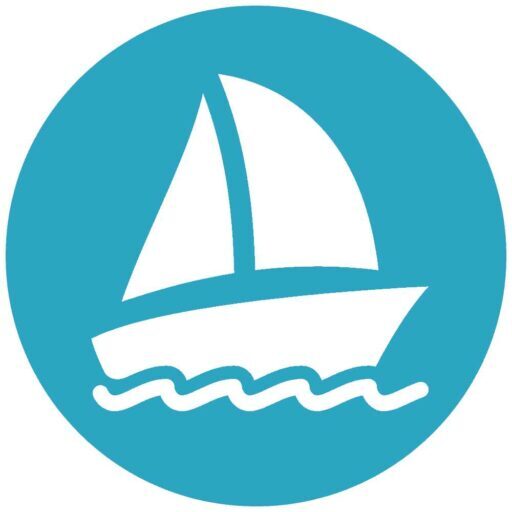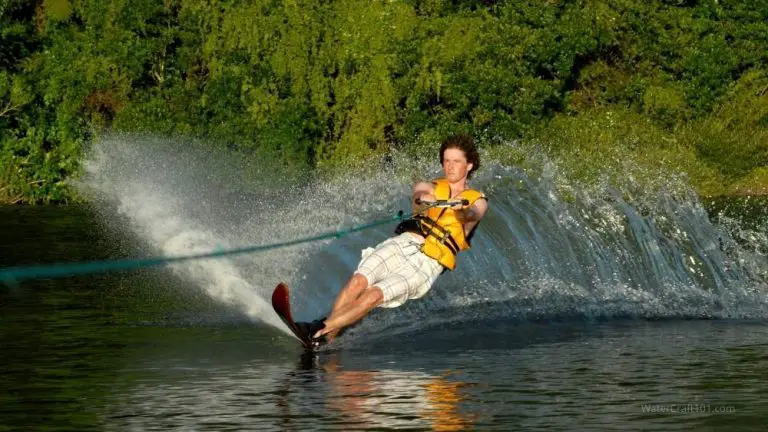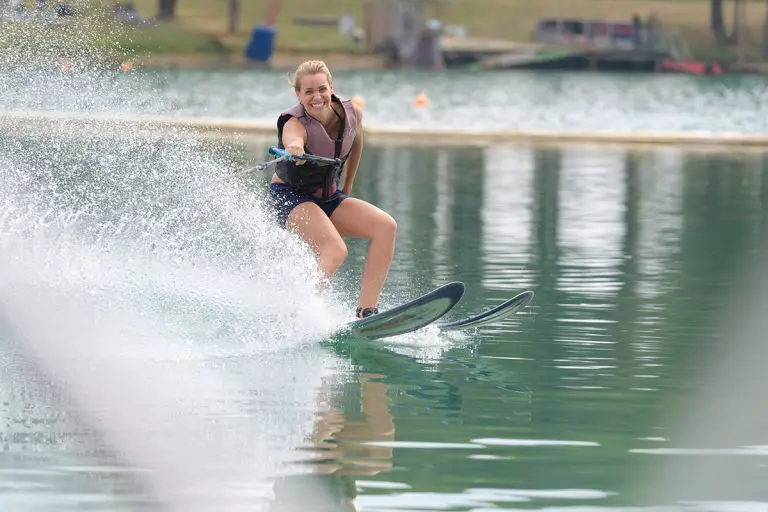Is Water Skiing Similar to Snow Skiing? (Let’s Find Out!)
Water and snow skiing are two of the most popular leisure sports there are. Having said that, if you’re good at one of them will you automatically be good at the other? How similar are water skiing and snow skiing to each other when it comes to overall skill and technique?
Water skiing is not similar to snow skiing as they use different forces. Water skiing uses the pull force, while snow skiing uses push. However, both require similar skills, such as balancing and having strong limbs to control your movement.
In this article, I’ll explain the differences and similarities between water skiing and snow skiing. I’ll also discuss the equipment and gear used for them, and if your current knowledge and skill on one applies to the other, so keep on reading.
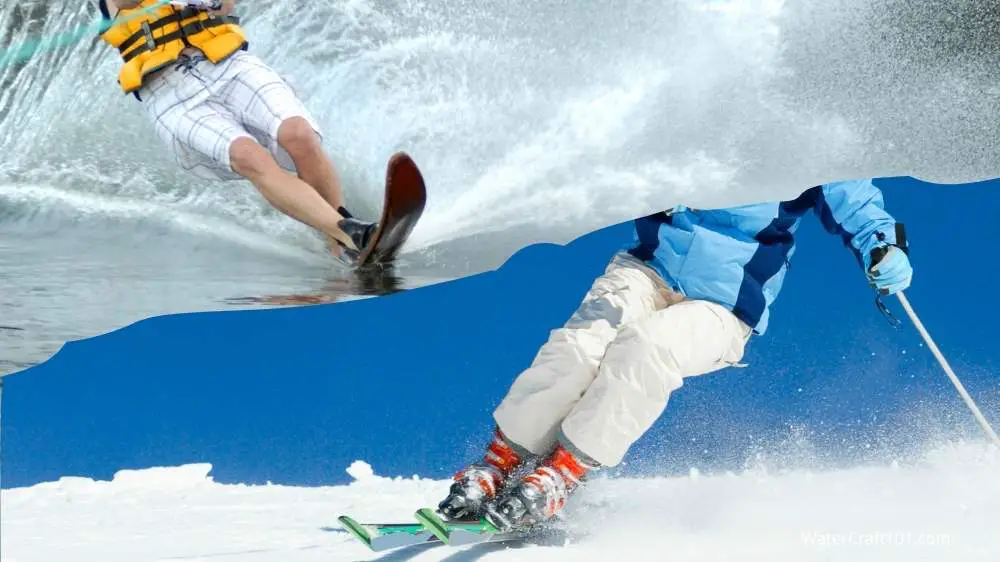
Differences Between Water Skiing and Snow Skiing
- Force: In water skiing, most of the action requires pulling to maintain balance and avoid falling in the water as the boat accelerates. In snow skiing, pushing through the snow creates better movement and speed as you go down the slopes.
- Speed: Your speed in water skiing will ultimately depend on the boat since it is the one responsible for your movement. While snow skiing, you have more control over where and how fast you want to go.
- Movement and position: In water skiing, your body will mostly be leaning back going against gravity, while in snow skiing, you will be leaning forward, allowing your body to submit to gravity.
- Weather: Right off the bat, the difference between water skiing and snow skiing is evident in the weather. Water skiing is more popular during summer, while snow skiing is only possible during winter.
- Gear and equipment:
- Skis: The skis used for water skiing are wider and thicker than those for snow skiing.
- Grip: In water skiing, a tow rope is attached to the boat to aid in pulling you, while in snow skiing, you use ski poles to create movement by pushing through the snow down the slopes.
Similarities Between Water Skiing and Snow Skiing
Although water skiing and snow skiing are barely the same, they still have a couple of similarities, including basic skills that you must possess to perform the activity successfully.
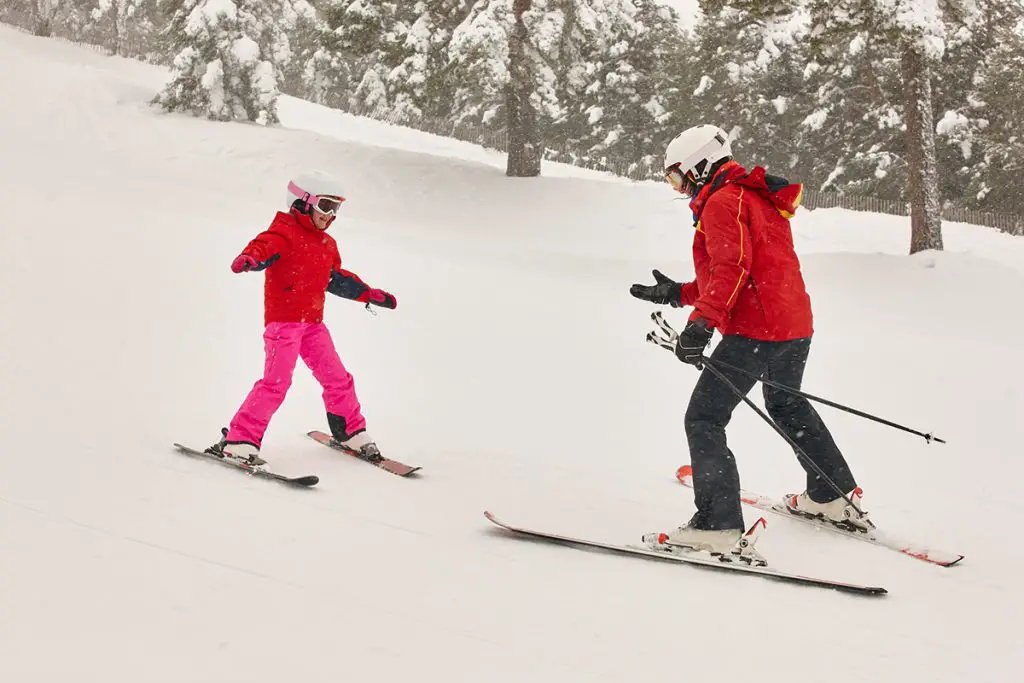
Both require good balance, especially since you will be moving at a considerable speed. This skill allows you to avoid falling off your skis and possibly getting hurt.
In line with this, you also need equipment and gear that ensure your safety while skiing. I’ll be discussing the things you must have to have an enjoyable and safe skiing experience in the next section of this article.
Lastly, water skiing and snow skiing are two of the most popular outdoor recreational activities during their respective seasons. And both of these exciting activities have also become competitive sports.
Equipment and Gear: Water Skiing vs. Snow Skiing
Here are some of the important equipment and gear needed for water skiing and snow skiing, which provide comfort and safety.
Water Skiing Equipment
- Skis: This is the essential equipment for water skiing. You can use either a single ski or a pair of skis to perform this activity.
- Life vest: A life vest is another must-have when water skiing in terms of safety. This equipment protects you from drowning if you fall or lose balance on the skis.
- Gloves: Using gloves like this Radar Vice Inside-Out Glove (available on Amazon.com) allows you to grip the rope better and provides hand protection.
- Tow rope: A good tow rope like this Airhead Dyneema Thermal Wakeboard Rope (Amazon) aids in maintaining stability as you are pulled by the boat.
- Binding: This helps in keeping your feet attached to the skis.
- Wetsuit: This helps to keep you warm in cold waters.
Snow Skiing Equipment
- Helmet: Wearing a helmet is a must since you will be going through the mountains at high speed. If you are looking to get a high-quality helmet, consider the Smith Vantage Snow Helmet (available on Amazon.com) to ensure maximum head protection.
- Skis: Another essential piece of equipment for snow skiing is a pair of skis, which allow you to glide through the snow easily. An excellent option would be this Elan Ripstick 96 Black Edition (available on Amazon.com) with QuadRod technology to help keep balance.
- Boots and binding: A good pair of skiing boots and bindings aid in keeping you stable while on the skis as you move past the snowy mountains.
- Poles: Skiing poles allow you to push down through the snow for better movement and help keep a steady balance.
- Layers: Since the setting of snow skiing is considerably cold, wearing layers can keep you warm and comfortable throughout your session. It can also keep you from getting frostbite, especially if you intend on staying on the slopes for hours.
- Goggles: A pair of goggles can help give you a better and clearer view of where you are headed while going through the mountains.
- Platinum, red, and black-colored lenses: These are recommended for bright and sunny weather conditions. The lenses reduce the amount of light that goes through and have less than or 25% VLT (visibility light transmission).
- Gold, copper, yellow, rose and amber-colored lenses: These are recommended for low-light or cloudy weather conditions. The lenses permit more light to pass through and have 50% or more VLT.
- Red, green and blue-colored lenses: These are recommended for partly sunny or cloudy weather conditions.
How Water Skiing Skills Apply To Snow Skiing and Vice Versa
There are bits and pieces of skill and knowledge you can carry over from water skiing to snow skiing and the other way around. As previously mentioned in the earlier parts of this article, balance, a strong core, and limbs are the common factors needed to do both successfully.
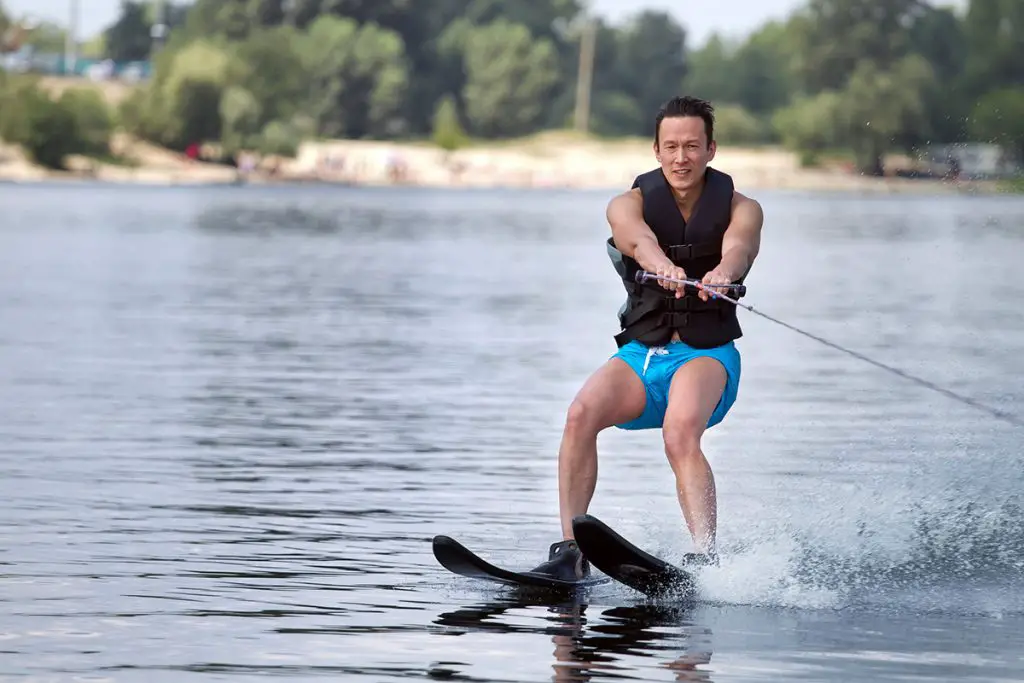
Although the techniques used for each activity are contrasting, there is a higher chance that you pick them up faster if you possess the factors above.
Final Thoughts
In a nutshell, water skiing is relatively different from snow skiing. However, it’s possible to learn both, especially if you have the skills needed to execute these activities.
So if you’re familiar and well-versed with one and want to do the other, I suggest you go for it and try it out. Plus, it’s always fun and beneficial to learn and acquire new skills.
